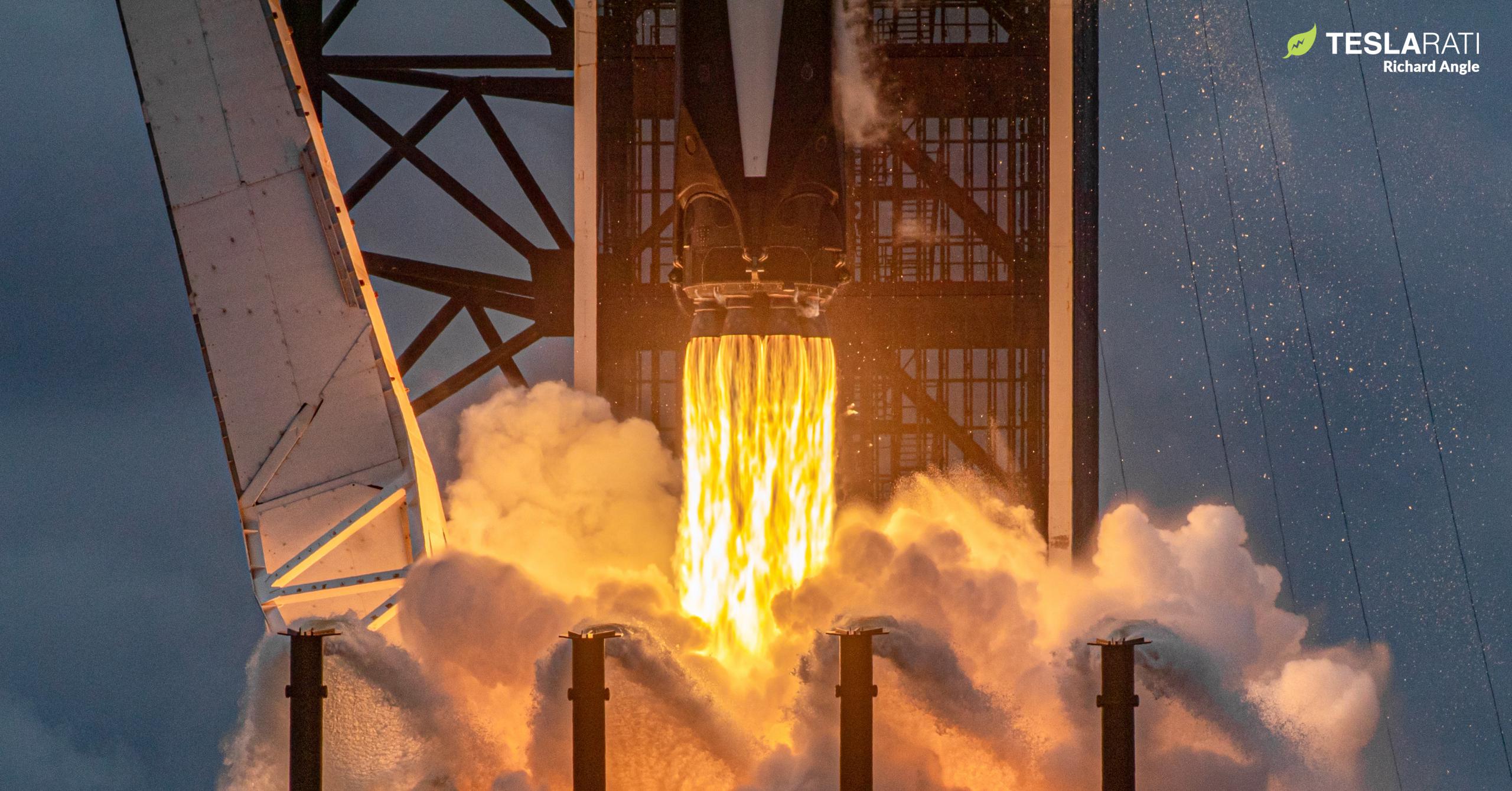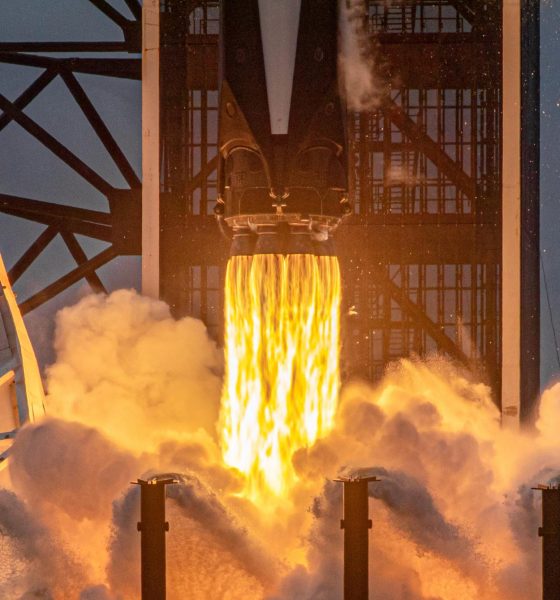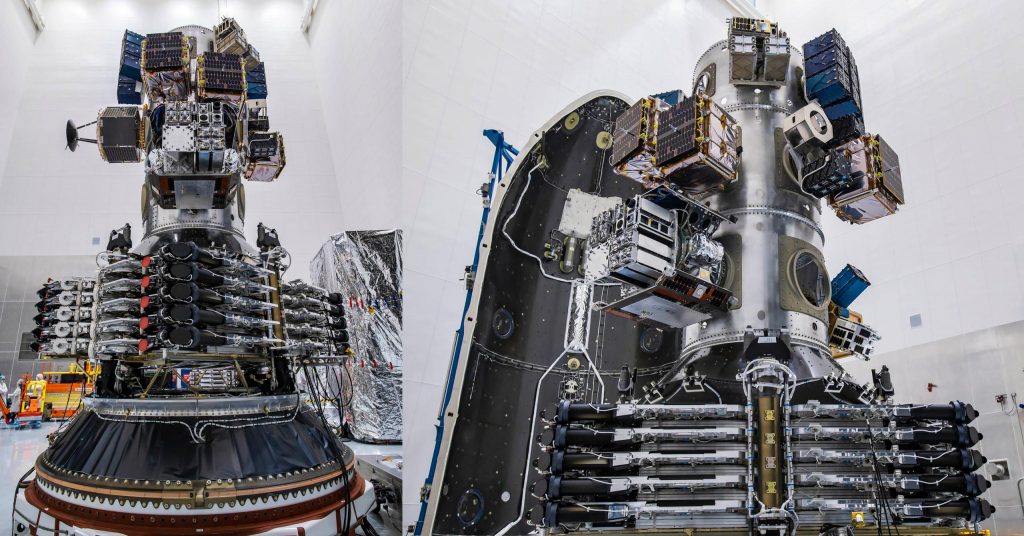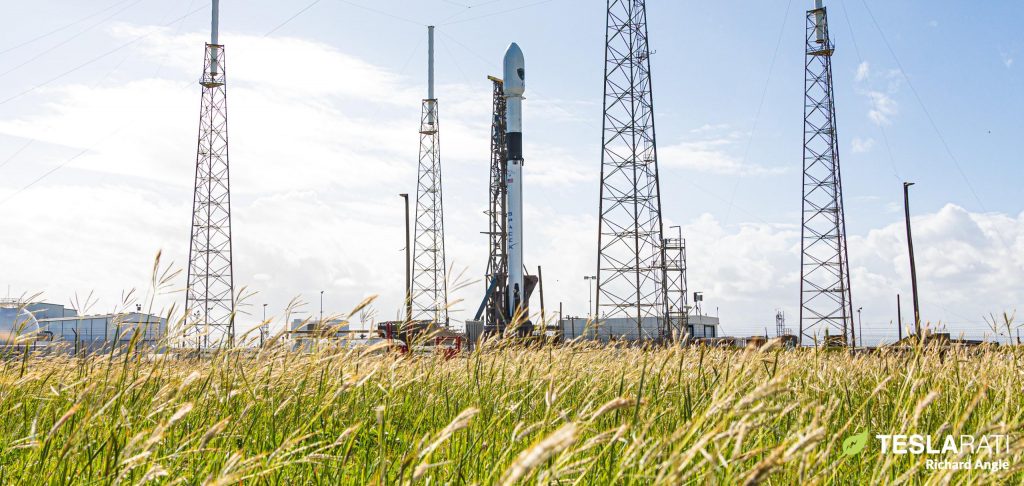

News
SpaceX on track to launch 20 Falcon 9 rockets in the first half of 2021
The second half of SpaceX’s June 2021 flight schedule has begun to firm up, raising the odds of another four-launch month as the end of the first half of 2021 fast approaches.
In an increasing rarity among a slew of pandemic and shortage-stricken satellites, rockets, and launch flows, SpaceX’s fourth upgraded GPS III satellite launch for the US military has remained on track for more than four months and has had a firm launch date for more than eight weeks. Further, the GPS III SV05 navigation satellite’s launch schedule actually moved up from July 2021 and has been scheduled to launch no earlier than June 17th, 2021 since mid-April. The only noteworthy change made in the subsequent two months was a minor shift in launch time, which was moved from 6-9 pm EDT to a 15-minute window stretching from 12:09 pm to 12:24 pm (16:09-16:24 UTC).
More recently, Spaceflight Now was first to report that Transporter-2 – SpaceX’s second dedicated Smallsat Program mission and fourth June 2021 launch – settled on a launch target sometime during daylight on June 24th. A large portion of rideshare payload integration – assembling a massive ‘stack’ of dozens of satellites and dispensers – has already been completed, improving the odds that Transporter-2 will launch on schedule.
As was SpaceX’s main intent with its Smallsat Program, the company effectively closes the metaphorical doors on a given Transporter mission around a week before launch. From then on, if issues arise with any minor integrated rideshare payload or something delays a planned payload from being integrated in time, the customer is more or less automatically rebooked on SpaceX’s next Transporter mission. That means that delays or pre-launch anomalies that inevitably impact a small fraction of a dedicated rideshare mission’s total payloads don’t end up delaying dozens to 100+ other spacecraft.
Crucially, for the unlucky few customers that find themselves essentially booted off the bus, SpaceX nominally rebooks them at no extra charge on the next Transporter mission. While the program is only just beginning, SpaceX has already scheduled four dedicated Transporter launches between January 2021 and Q1 2022, meaning that payloads unable to launch on their scheduled flight will have to wait approximately six months for the next launch opportunity. While undoubtedly more than a little inconvenient, SpaceX is effectively betting that customers are willing to trade some degree of flexibility for low prices and launch dates firmly scheduled months in advance.
So far, that bet has unequivocally paid off and SpaceX has secured contracts to launch hundreds of rideshare payloads in just a few years.

Meanwhile, SpaceX’s June 17th GPS III SV05 mission will be the first time ever that the US military launches a “national security” payload on a flight-proven commercial rocket. Falcon 9 booster B1062 debuted with the successful launch of GPS III SV04 in November 2020. Seven months later, GPS III SV05 will be its second launch. If successful, it’s likely that the US military will allow SpaceX to use Falcon 9 B1062 a third time to launch GPS III SV06 – tentatively scheduled sometime in Q4 2021 or early 2022.

If both GPS III SV05 and Transporter-2 missions are successful, June 2021 will be SpaceX’s third four-launch month ever, representing an average of 48 launches per year if sustained for 12 months. All four June launches are also for paying customers, bringing welcome revenue to an H1 2021 manifest that’s been almost entirely populated by internal Starlink missions. Perhaps most significantly, a four-launch June will also mark 20 orbital SpaceX launches in the first half of 2021, leaving the company on track to achieve 40 launches this year if it can replicate that success in the second half.

Cybertruck
Tesla Cybertruck undergoes interior mod that many owners wanted

Tesla Cybertruck is significantly different from traditional pickups on the market in a lot of ways. However, one feature that was recently modified with its interior was a highly requested characteristic that is present in other trucks, but was void from Cybertruck.
Tesla went with a five-seat configuration with Cybertruck: two in the front and three in the back. The spacious interior is matched with plenty of storage, especially up front, as a pass-through, center console, and other storage options, but some Tesla fans wanted something different: bench seating.
Bench seating is popular in many full-size pickups and allows three passengers to sit up front. The middle seat is usually accompanied by a fold-down storage unit with cupholders.
Tesla decided to opt for no bench seating up front, despite the fact that it equipped bench seating in the unveiling in 2019. Interior photos from the unveiling event from nearly six-and-a-half years ago show Tesla had originally planned to have a six-seat configuration.
This was adjusted after the company refined the design:

(Tesla Cybertruck interior configuration in 2019)
Despite Tesla abandoning this design, it does not mean owners were willing to accept it. One owner decided to modify their Tesla Cybertruck interior to equip that third seat between the driver’s and passenger’s thrones.
The fit is snug, and while it looks great, it is important to remember that this does not abide byregulations, as it would require an airbag to be technically legal. Please do not do this at home with your own Cybertruck:
- Credit: @blueskykites
- Credit: @blueskykites
- Credit: @blueskykites
The Cybertruck is a popular vehicle in terms of publicity, but its sales have been underwhelming since first delivered to customers back in 2023. It’s hard to believe it’s been out for two-and-a-half years, but despite this, Tesla has not been able to come through on its extensive order sheet.
This is mostly due to price, as Cybertruck was simply not as affordable as Tesla originally planned. Its three configurations were initially priced at $39,990, $49,990, and $69,990. At release, Cybertruck was priced above $100,000.
This priced out many of those who had placed orders, which is the main reason Cybertruck has not lived up to its expectations in terms of sales. The adjustments to the specific features, like the removal of the bench seat, likely did not impact sales as much as pricing did.
This modification shows some creativity by Tesla owners, but also shows that the Cybertruck could always be the subject of a potential refresh to include some of these features. Tesla routinely adjusts its vehicle designs every few years, so maybe the Cybertruck could get something like this if it chooses to refresh its all-electric pickup.
Elon Musk
Tesla CEO Elon Musk drops massive bomb about Cybercab
“And there is so much to this car that is not obvious on the surface,” Musk said.

Tesla CEO Elon Musk dropped a massive bomb about the Cybercab, which is the company’s fully autonomous ride-hailing vehicle that will enter production later this year.
The Cybercab was unveiled back in October 2024 at the company’s “We, Robot” event in Los Angeles, and is among the major catalysts for the company’s growth in the coming years. It is expected to push Tesla into a major growth phase, especially as the automaker is transitioning into more of an AI and Robotics company than anything else.
The Cybercab will enable completely autonomous ride-hailing for Tesla, and although its other vehicles will also be capable of this technology, the Cybercab is slightly different. It will have no steering wheel or pedals, and will allow two occupants to travel from Point A to Point B with zero responsibilities within the car.
Tesla shares epic 2025 recap video, confirms start of Cybercab production
Details on the Cybercab are pretty face value at this point: we know Tesla is enabling 1-2 passengers to ride in it at a time, and this strategy was based on statistics that show most ride-hailing trips have no more than two occupants. It will also have in-vehicle entertainment options accessible from the center touchscreen.
It will also have wireless charging capabilities, which were displayed at “We, Robot,” and there could be more features that will be highly beneficial to riders, offering a full-fledged autonomous experience.
Musk dropped a big hint that there is much more to the Cybercab than what we know, as a post on X said that “there is so much to this car that is not obvious on the surface.”
And there is so much to this car that is not obvious on the surface
— Elon Musk (@elonmusk) January 2, 2026
As the Cybercab is expected to enter production later this year, Tesla is surely going to include a handful of things they have not yet revealed to the public.
Musk seems to be indicating that some of the features will make it even more groundbreaking, and the idea is to enable a truly autonomous experience from start to finish for riders. Everything from climate control to emergency systems, and more, should be included with the car.
It seems more likely than not that Tesla will make the Cybercab its smartest vehicle so far, as if its current lineup is not already extremely intelligent, user-friendly, and intuitive.
Investor's Corner
Tesla Q4 delivery numbers are better than they initially look: analyst
The Deepwater Asset Management Managing Partner shared his thoughts in a post on his website.

Longtime Tesla analyst and Deepwater Asset Management Managing Partner Gene Munster has shared his insights on Tesla’s Q4 2025 deliveries. As per the analyst, Tesla’s numbers are actually better than they first appear.
Munster shared his thoughts in a post on his website.
Normalized December Deliveries
Munster noted that Tesla delivered 418k vehicles in the fourth quarter of 2025, slightly below Street expectations of 420k but above the whisper number of 415k. Tesla’s reported 16% year-over-year decline, compared to +7% in September, is largely distorted by the timing of the tax credit expiration, which pulled forward demand.
“Taking a step back, we believe September deliveries pulled forward approximately 55k units that would have otherwise occurred in December or March. For simplicity, we assume the entire pull-forward impacted the December quarter. Under this assumption, September growth would have been down ~5% absent the 55k pull-forward, a Deepwater estimate tied to the credit’s expiration.
“For December deliveries to have declined ~5% year over year would imply total deliveries of roughly 470k. Subtracting the 55k units pulled into September results in an implied December delivery figure of approximately 415k. The reported 418k suggests that, when normalizing for the tax credit timing, quarter-over-quarter growth has been consistently down ~5%. Importantly, this ~5% decline represents an improvement from the ~13% declines seen in both the March and June 2025 quarters.“
Tesla’s United States market share
Munster also estimated that Q4 as a whole might very well show a notable improvement in Tesla’s market share in the United States.
“Over the past couple of years, based on data from Cox Automotive, Tesla has been losing U.S. EV market share, declining to just under 50%. Based on data for October and November, Cox estimates that total U.S. EV sales were down approximately 35%, compared to Tesla’s just reported down 16% for the full quarter. For the first two months of the quarter, Cox reported Tesla market share of roughly a 65% share, up from under 50% in the September quarter.
“While this data excludes December, the quarter as a whole is likely to show a material improvement in Tesla’s U.S. EV market share.“











